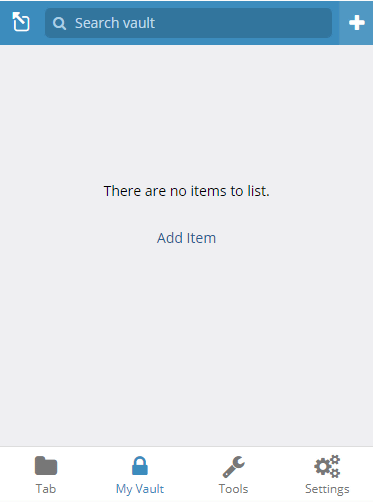Snap is a software deployment and package management system. The packages are called 'snaps' and the tool for using them is 'snapd', which works across a range of Linux distributions and allows, therefore, distro-agnostic upstream software deployment. Snap was originally designed and built by Canonical.
snapd is a REST API daemon for managing snap packages. Users can interact with it by using the snap client, which is part of the same package.
So after installing you need to snap connect bitwarden:password-manager-service. If that works we can request that it's auto connected by an assertion in the store. So end users wouldn't have to connect it themselves as above. Bitwarden Send (One-to-One Text and File Sharing) Text Sharing: Text + File Sharing: Text + File Sharing: Sync all of your devices: Shared Items-Unlimited: Secure Password Generator: Encrypted file attachments-1 GB Personal: 1 GB+ Personal 1 GB+ for Org Items: Encrypted Export: Premium Features: Upgrade Required: Bitwarden Authenticator (TOTP. Snap 'certbot' is already installed, see 'snap help refresh' Site 000-default already disabled Trying to generate certs and validate them with standalone method. /dev/fd/63: line 547: certbot: command not found It seems like no certs were generated when trying to validate them with the standalone method. We will do more tries.
Snaps can be confined using AppArmor which is now enabled in the default kernel. Consult relevant wiki pages to find steps for enabling AppArmor in your system.
Installation
Install the snapdAUR package.
snapd installs a script in /etc/profile.d/snapd.sh to export the paths of binaries installed with the snapd package and desktop entries. Reboot once to make this change take effect.snapd supports the AppArmor security model if it is enabled on your system, to install it follow AppArmor#Installation.
If you are using AppArmor, enable and start both apparmor.service and snapd.apparmor.service.
Configuration
To launch the snapd daemon when snap tries to use it, start and/or enable the snapd.socket.
Usage
The snap tool is used to manage the snaps.
Finding
To find snaps to install, you can query the Ubuntu Store with:
Installing
Once you found the snap you are looking for you can install it with:
This requires root privileges. Per user installation of snaps is not possible, yet. This will download the snap into /var/lib/snapd/snaps and mount it to /var/lib/snapd/snap/snapname to make it available to the system.
It will also create mount units for each snap and add them to /etc/systemd/system/multi-user.target.wants/ as symlinks to make all snaps available when the system is booted.Once that is done you should find it in the list of installed snaps together with its version number, revision and developer using:
You can also sideload snaps from your local hard drive with:
Updating
To update your snaps manually use:
Snaps are refreshed automatically according to snap refresh.timer setting.
To view the next/last refresh times use:
To set a different refresh time, eg. twice a day:
See system options documentation page for details on customizing the refresh time.
Removing

Snaps can be removed by executing:
Tips and tricks
Classic snaps
Some snaps (e.g. Skype and Pycharm) use classic confinement. However, classic confinement requires the /snap directory, which is not FHS-compliant. The snapd package does not ship this directory, however the user can manually create a symbolic link between /var/lib/snapd/snap and /snap to allow the installation of classic snaps:
Confinement
When using AppArmor, snapd will generate the same profiles for snaps as on Ubuntu. The AppArmor parser is smart enough to drop the rules that are not yet supported by the mainline kernel.
To verify that basic confinement is working, install hello-world snap. Then run the following:
The denial was caused by AppArmor and should have been logged:
If you do not see the denial, verify that the profiles were loaded:
Also, you can check what sandbox features are available in the system according to snapd:
Troubleshooting
Text unreadable
If you are seeing squares instead of readable characters, you need to clear the font cache:
Snapctl also stores internal caches for each individual snap, which need to be cleared seperately.First, find them by running:
Then either remove them individually or use this simple loop.
Finally, Restart your session.
Graphical management
Both Gnome Software Center and KDE Discover can provide native snap support. For KDE Discover install discover-snapAUR package.
Support
Arch Linux related mailing lists and other official Arch Linux support channels are not an appropriate place to request help with snaps on Arch Linux. An appropriate place to ask for support is the Snapcraft forum.
See also
Snap Bitwarden Free
- arstechnica article (06/16) about Ubuntu snaps becoming available for Arch and other distros
Snap Bitwarden Portal
